PhD Graduates, Candidates and Students
PhD Graduates, Candidates, and Students
⟶ PhD Graduates
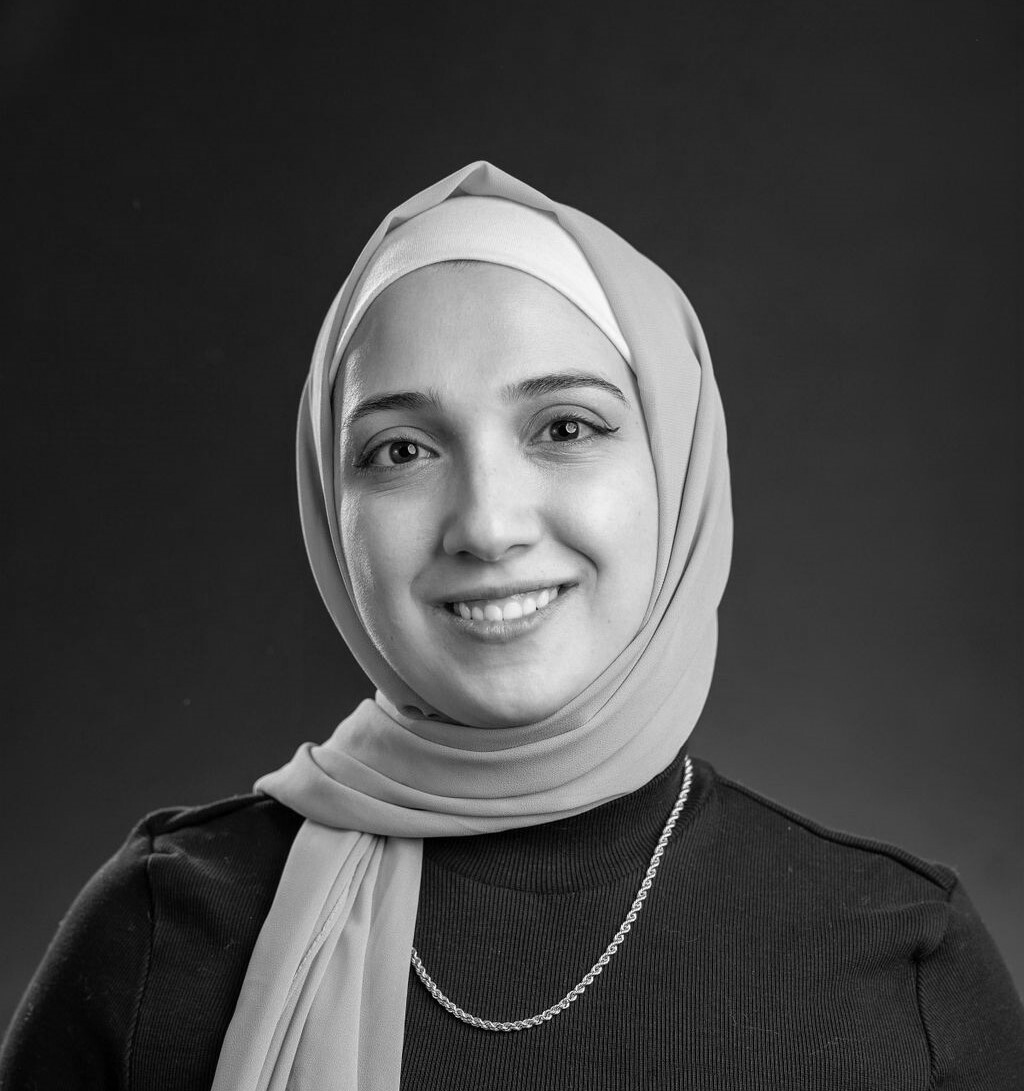
Dr. JENAN GHAZAL PhD 2025
Jenan Ghazal successfully defended her dissertation, Walking in the “Meanwhile”: Fieldnotes on spatial violence in Beirut, on Nov. 27, 2024. Jenan earned a post-professional Master of Architectural Studies from Carleton University in 2016. She holds a BArch (2012) and an M.Arch (2014) from the Académie des Beaux-Arts in Lebanon, where she also has professional experience as a licensed architect. Before studying at Carleton, Ghazal was involved with community-based activism and documentation of endangered heritage buildings in her hometown of Tripoli, Lebanon. Living in a city in conflict, she experienced firsthand the destruction inflicted both on and by the built environment while she was in her undergraduate studies in architecture. Inspired by this journey, her doctoral research aims to destabilize traditional assumptions about the dynamics between political violence and architecture in Lebanon. Considering spatial violence as a political (and architectural) practice of oppressing states, she looks at Beirut’s specific urban spaces where citizens experienced physical and non-physical violence brought by their immediate built environment. Her work aims to contribute to an understanding of spatial violence in architecture – not as a state of exception but as continuous immanence.
Walking in the “Meanwhile”: Fieldnotes on spatial violence in Beirut
This dissertation is an investigation of spatial violence in Beirut through a critical walking practice grounded in a feminist ethnographic approach as a methodology of learning. It focuses on key architectural and civic spaces in the city, including its walls of shame, bitter towers, and urban squares. As a scholarly project, this research is located in the “meanwhile,” a deliberate spatial and temporal uncertainty maintained by the stateless state (sulta) and its various corporate alliances with companies like Solidere. Between 2018 and 2023, my practice of walking, along with photographic fieldwork, critical mapping, and oral history, captured what I call “the spaces of the void,” which emerged as a result of the sulta’s particular forms of urban and political control: its manufacturing of spatial violence. This violence exists behind Beirut’s wall of shame (2015 and 2019), around the tower of bitterness (1975 – onwards), and inside the squares of the city – what should be, today, vibrant public spaces.
Living in the “meanwhile,” the spaces of the void enable both the recollection of past violence and the anticipation of future violence. On 17 October 2019, this “meanwhile” was abruptly interrupted by a historical popular uprising (the thawra), and people reclaimed (and filled) the spaces of the void in their cities, demanding the downfall of the sulta. Despite the sulta’s extensive securitization of the city in response to large-scale protests, the organic urban planning practice of protestors in the streets (re)creating their public space – arrested the decades-long production of the spaces of the void.
The research shows a reconceptualization of a network of spatial violence (Part II) into spaces of the thawra (Part III). Consequently, this dissertation begins with an investigation of spatial violence and concludes with a participatory practice of architecture – in partnership with marginalized communities – rooted in spatial justice. In doing so, and despite contributing to a growing body of urban geopolitics and security studies, the research further poses the question of spatial violence, not as pertaining entirely to theories of violence and space, but to the practice of architecture in its pursuit of spatial justice.
Supervisor: Dr. Ozayr Saloojee, Professor, ASAU, CU
Advisor: Dr. Claudio Sgarbi, Adjunct Professor, ASAU, CU
Advisor: Dr. Jens Hanssen, Associate Professor of Arab Civilization, Middle Eastern and Mediterranean History, University of Toronto
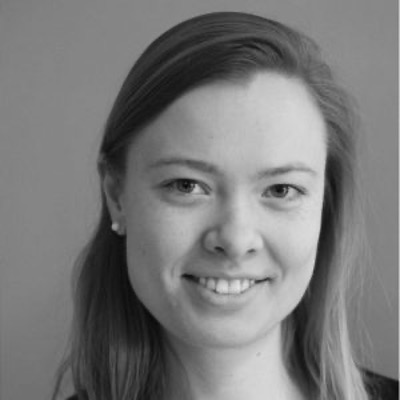
Dr. ISABEL POTWOROWSKI PhD 2025
Isabel Potworowski is an Assistant Professor of Architecture at the University of Cincinnati College of Design, Architecture, Art, and Planning. She completed her Bachelor’s in Architecture at McGill University (2011), her professional Master’s in Architecture at TU Delft (2015), and obtained a Master’s in Architectural History + Theory at McGill (2020). In the Netherlands, she worked at Barcode Architects, the International New Town Institute, and Mecanoo Architecten. At the ASAU, in her role as a coordinator of CR|PT|C (Carleton Research | Practice of Teaching | Collaborative), Isabel co-convened the Agora II international symposium (Un)Common Precedents with Dr. Federica Goffi and fellow PhD candidate Kristin Washco and is currently co-editing a book based on the symposium, forthcoming in 2025 with Routledge. Her doctoral research examines the role of representation practices in the design of architecture that reinforce a sense of place and foster experiences of contemplative reflection and spirituality. It focuses on the design process of Atelier Zumthor and their use of physical models and drawings – conceptual synaesthetic drawings, large site models, and material prototypes – to create evocative material atmospheres with a spiritual dimension. Isabel’s broader research interests revolve around the architectural design process, materiality, atmosphere, spirituality, and the life of urban spaces.
Mediators of Transcendence: Examining the role of Atelier Zumthor’s representation practices in the design of architecture capable of mediating an experience of transcendence
Atelier Zumthor’s buildings have been variously described by critics and scholars as having “atmosphere,” a “sense of presence,” “evoking mystery,” fostering experiences of the “spiritual”, of “transcendence,” even of the “sacred,” and “lead[ing] towards the holy”. The present research aims to investigate how architecture that fosters such experiences is designed, focussing on the role of representation practices. A common approach to studying sacred space and atmospheres is to describe significant architectural qualities and their relation to the experience and use of a building. While this approach informs my own research, the present study focusses instead on the design process, primarily because it is inseparable from – and largely determines – the qualities of the built result. The design of buildings that evoke a certain experience depends on the architect’s ability to project themselves imaginatively into the future building and site. In architectural projects, this projection is accomplished by representational practices. How are atmospheres that express transcendence drawn, modelled, imagined, communicated, and translated into a built work? The research will examine the design process of three buildings – the Sogn Benedetg chapel, the Bruder Klaus chapel, and the Kolumba museum – and Zumthor’s teaching about representation both at the Academy of Architecture in Mendrisio, where he taught from 1996 to 2007, and in the spring 1999 studio “The House Without a Form,” which he taught at the Harvard GSD. The research is situated at the intersection of four distinct yet overlapping scholarly discourses: (1) sacred space in Catholic theology and (2) in religious studies and architecture, (3) architectural atmospheres and phenomenology, and (4) architectural representation practices.
Supervisor Dr. Federica Goffi, Professor, Co-Chair PhD Architecture, ASAU, CU
Co-Supervisor Dr. Stephen Fai, Professor, Director CIMS, Co-Chair PhD Architecture, ASAU, CU
Advisor: Dr. Bert Daelemans, Professor, Faculty of Theology, Department of Dogmatic and Fundamental Theology, Comillas Pontifical University
Advisor: Dr. Philip Ursprung, Professor, History of Art and Architecture (GTA), ETH Zurich

Dr. KRISTIN WASHCO PhD 2025
Kristin Washco is an Assistant Professor (Tenure Track) at Virginia Tech’s five-year undergraduate accredited architecture program in the School of Architecture (Blacksburg, VA). She has taught at the school since Winter 2023, previously as an Adjunct Assistant Professor and a Visiting Assistant Professor of Practice, offering lecture courses such as Building Materials and Building Analysis, and the History & Theory seminar course Ideas-Concepts-Representations. She also teaches a third-year architecture studio and supervises undergraduate and graduate thesis students. Kristin co-convened the Agora II international symposium (Un)Common Precedents with Dr. Federica Goffi and fellow PhD candidate Isabel Potworowski and is currently co-editing a book based on the symposium, forthcoming in 2025 with Routledge. Recently, she presented her paper “Verified in Field: Drawings of Builders” at the 2024 Production Studies Conference at Newcastle University, UK.
Lingering atmospheres: Collaborations between Architecture, Craft, Music, Landscape, and Film in Peter Zumthor’s Gesamtkunstwerks
This dissertation explores the connections between multidisciplinary design and multisensory experience by investigating the collaborations between architecture, craft, music, landscape, and film in Swiss Architect Peter Zumthor’s gesamtkunstwerks. If sense perception is understood as fundamentally multisensory in nature, and the experience of architecture is dependent on the people, situations, and events it houses, how might we reexamine occularcentric and unidisciplinary narratives of architectural history? I focus on three temporary exhibitions that Zumthor co-curated: The Swiss Sound Box (Hannover Expo 2000), the Hortus Conclusus (Serpentine Gallery Pavilion 2011), and the Dear to Me Exhibition (Kunsthaus Bregenz 2017). These projects make explicit the centrality of cross-disciplinary collaboration and cross-modal perception in Zumthor’s practice. They are lingering temporary environments: designed as gesamtkunstwerks and realized through collaborations with musicians, literary critics and writers, chefs and hospitality experts, artists, filmmakers, landscape designers, and engineers. They shift focus away from architecture as a hermetically sealed discipline toward an architecture that is inherently intertwined with other disciplines. By investigating Zumthor’s productive images (drawings, models, and words) as creative gestures which overtly address multisensory experience and communicate with adjacent disciplines, this research offers new insight on Zumthor’s creative process and works. As the title to the 2017 publication Dear to Me: Peter Zumthor in Conversation suggests, it is not the Peter Zumthor as sole proprietor, but rather Peter Zumthor “in conversation” that fosters the most evocative atmospheres. I aim to reveal the distinct yet interdependent nature of architecture and its surrounding disciplines, bringing to light the intersections and collaborations which temporarily alter our permanent world.
Supervisor: Dr. Federica Goffi, Professor, Co-Chair PhD Architecture, ASAU, CU
Advisor: Dr. Stephen Fai, Professor, Director CIMS, Co-Chair PhD Architecture, ASAU, CU
Advisor: Dr. Paul Emmons, Professor, Associate Dean for Graduate Studies, WAAC, Virginia Tech

Dr. RANA ABUGHANNAM PhD 2024
Rana Abughannam joined the School of Architecture and Landscape Architecture at the University of British Columbia as an Assistant Professor in August 2023. A registered architect in Palestine and Jordan, she defended her PhD dissertation, The counter-colonial: The agency of architectural rehabilitation as a form of resistance in Hebron, Palestine, in 2024. Her research explores spatial counter-colonial tactics exemplified in Indigenous, bottom-up, and constant practices of resistance against ongoing colonial projects, emphasizing the agency of architectural rehabilitation as a form of resistance. She recently co-edited Architectures of Hiding: Crafting Concealment | Omission | Deception | Erasure | Silence with Émélie Desrochers-Turgeon, Pallavi Swaranjali, and Federica Goffi, a publication that delves into the responsibilities of architects in shaping the built environment, examining processes of concealing and unconcealing narratives and imaginaries in architectural spaces.
The counter-colonial: The agency of architectural rehabilitation as a form of resistance in Hebron, Palestine
The old city of Hebron in Palestine presents an extreme condition of a colonized space where historic and religiously significant built heritage is overlapped by Israeli colonial infrastructure, including settlements, checkpoints, watchtowers, and barricades. Hebron’s built heritage has become the locus where counter-colonial tactics are deployed in response to the ongoing settler colonial project and where Hebron Rehabilitation Committee (HRC) has responded to the colonial structure through strategies of restoration, reclamation, and emancipatory architectural practice. This thesis proposes the notion of the counter-colonial as a conceptual and mobilizing framework for tactics of resistance against the ongoing settler colonial project. The counter-colonial establishes epistemological, methodological, and interpretive resistance tactics that recognize the setter-colonial project and mobilize within and beyond its limitations through multiple forms and transformations. These tactics are active, Indigenous, bottom-up, and constant responses to and against a colonial project. They offer novel, innovative, and alternative processes that reclaim and reinforce Palestinians’ agency over their lands, actions, narratives, and existence.
As a counter-colonial research project, this dissertation prioritizes epistemic reconsideration, slow learning, and intimate uncovering, promoting the methods of countering as investigative probing rather than problem-solving. Focusing on HRC’s rehabilitation and governance efforts, this thesis underscores three counter-colonial tactics: (1) counter-governance, where the HRC has taken a semi-governmental role to protect and serve the Hebronites, becoming stewards of the site; (2) counter-heritage, where the HRC has employed the UNESCO World Heritage Site designation as a tool to advocate for the Palestinian cause; and (3) counter-evidence, where the HRC’s documentation and archival work are presented in legal contexts as proof of Palestinian land ownership.
Following an analysis of these tactics, the dissertation concludes that counter-colonial tactics are mobilized through four forms: spatial action, material force, representational process, and symbolic meaning.
Supervisor: Dr. Ozayr Saloojee, Professor, ASAU, CU
Advisor: Dr. Federica Goffi, Professor, Co-Chair PhD Architecture, ASAU, CU
Advisor: Dr. Salim Tamari, Sociologist, Birzeit University
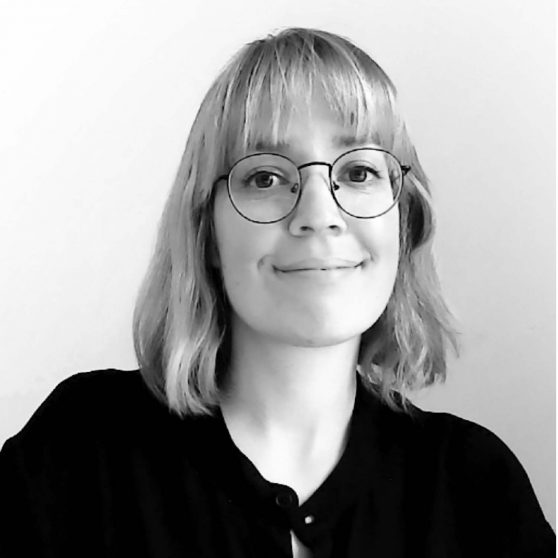
Dr. ÉMÉLIE DESROCHERS-TURGEON PhD 2024
Dr. Émélie Desrochers-Turgeon defended her dissertation, Land, Science and Architecture: Politics of Scale in 1856–1914 Ottawa, Canada in 2024. She is now an assistant professor at the Dalhousie University School of Architecture. There, she teaches architectural history and studio while working on her research on architectural and environmental histories, settler colonialism, and extractivism. Émélie co-edited the book “Architectures of Hiding: Crafting Concealment | Omission | Deception | Erasure | Silence,” alongside Rana Abughannam, Pallavi Swaranjali, and Federica Goffi, published by Routledge. She is involved in projects with the Beyond Extraction collective. Émélie has also taught at Université du Québec à Montréal and Carleton University.
Land, Science and Architecture: Politics of Scale in 1856–1939 Ottawa, Canada
Settler colonial regimes of city-making in Ottawa have incorporated the built environment to construct a narrative of liberalism, benevolence, and rational governance, effectively obscuring the processes of land dispossession and environmental transformation. This dissertation investigates the land representations that shape Ottawa as a settler state capital, examining the scientific institutions of the Dominion Observatory, the Central Experimental Farm, the Geological Survey of Canada, and the Central Canada Exhibition at the turn of the twentieth century. It explores how these state institutions relied on the manipulation of scales and the construction of architectural fictions to alter land into metrics of possession.
This dissertation historicizes and critically examines architecture’s entanglement with imperial networks and settler colonial imaginaries through practices of bordering, inventorying, improving, and displaying in Ottawa and across Canada. It argues that architectural expertise, coupled with centralized government control, constructed geographies that structured the lives of both human and non-human entities within imperial frameworks. Beyond the visual culture of science in Ottawa, this study explores the frictions and contradictions inherent in the negotiation of terrains through architecture. By considering scale both as a subject of study and as a methodological tool, it delves into architectural histories of land, highlighting agential materialities within these practices.
Supervisor: Dr. Federica Goffi, Professor, Co-Chair PhD Architecture, ASAU, CU
Advisor: Dr. Catherine Bonier, Assoc. Prof., ASAU, CU
Advisor: Dr. Zoe Todd, Assoc. Prof., Simon Fraser University
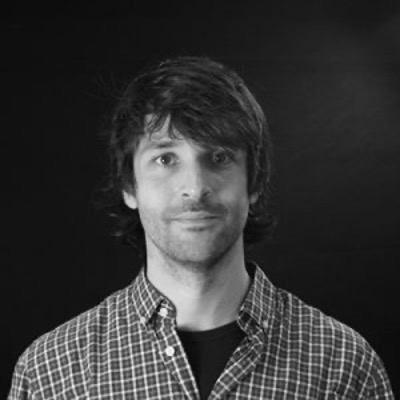
Dr. MIQUEL REINA ORTIZ PhD 2024
Miquel Reina Ortiz has been granted an assistant professor role in the Faculté de l’Aménagement of the Faculty of Environmental Design at the Université de Montréal. He also teaches heritage documentation courses as a guest professor at the Master of Monuments Restoration at the UPC in Barcelona. He has collaborated with Carleton Immersive Media Studio (CIMS) in the documentation of World Heritage Sites and the development of new digital workflows applied to heritage conservation. His research concerns the relationship between different scales of intervention within the context of the historic city. He is an ICOMOS International Scientific Committee on Historic Cities, Towns and Villages (CIVVIH) associate member. Before studying at Carleton Ortiz studied architecture at ETSABarcelona (UPC), where he graduated with honours in 2011, and holds a MSc in Restoration and Rehabilitation at ETSABarcelona (UPC). His professional experience in the architecture studio Ravetllat-Ribas Barcelona (2008-2015) focused on adaptive reuse projects, and as a licensed architect, he designed public space, housing, interiors, and competitions. Dr. Miquel Reina Ortiz has been Favorite Faculty member for the 2021-2022 academic year at the Azrieli School of Architecture & Urbanism.
The Role of the Detail in the Historic City. The Interdetails of Barcelona Ciutat Vella
Classic urban historiography has traditionally understood cities as a whole composed of parts, but this relationship has been challenged over time. Similarly, the concept of integrity has been questioned in the heritage conservation field, from a static to a dynamic and relational approach. Currently, historic cities are understood as a process rather than an object, placing special recognition in the layering and interconnectivity of the natural/cultural, tangible/intangible, and international/local values. Considering both aspects, I reflect on historic cities at three scales: urban, building, and constructive detail. From this multi-scalar approach, the building is understood as an assemblage of components—both tangible and intangible—whose relationship continually changes over time. As such, the heritage building is not considered an isolated object but as a part of a relational space that ranges from the constructive detail to the block, neighbourhood, and city. In this research, I examine Barcelona, the first city named historic, and one of its characteristic tectonic elements, the tile vault, known as volta de maó de pla or Catalan Vault. Ildefons Cerdà (1815-1876), engineer and the first urban theorist, labelled the existing ensemble as ‘historic’ in opposition to his new proposal known as Eixample in 1859, being the first scholar who faced the challenge of defining the Historic City in relation to the extension or new one and considering it as a part of the new whole. The first examples of the volta de maó de pla in Barcelona trace back to the XV century, being a simple, light, fast, economic, versatile and fire-resistant ceramic vaulting technique that inspired a whole construction system known as Construcciò Catalana (Catalan Construction), used extensively in the construction of the city from the pre-industrialization period in 1770 until the recession caused by the Civil War in 1936. The volta de maó de pla has disappeared in Europe, and it is currently only present in the restoration of historic buildings. From these premises, I posit that the “construction and construing” (Frascari 1982) of the Catalan Vault is intimately linked with the Historic City of Barcelona, and consequently plays an essential role in its conservation. This multi-scalar approach highlights the importance of preserving the fine-grain integrity —frequently obliterated— in relation to the urban-grain. The detail tells the story of its making, placing, and dimensioning, but also of its conserving; joining the tangible with the intangible in a cycle that engages the Historic City landscape, calls upon traditional knowledge, and relates to the ritual inhabitation of the site and buildings. This dissertation argues that the most pressing conservation challenge for today’s Historic City’s integrity is to determine how this cycle of renewal can be balanced considering that the whole is contained in the part.
Supervisor Dr. Mariana Esponda, Assoc. Prof., Coordinator Architectural Conservation and Sustainability, ASAU, CU
Co-Supervisor Dr. Mario Santana Quintero, Professor, Architectural Conservation and Sustainability Engineering, CU
Co-Supervisor: Dr. Stephen Fai, Professor, Director CIMS, Co-Chair PhD Architecture, ASAU, CU
Advisor: Dr. Federica Goffi, Professor, Co-Chair PhD Architecture, ASAU, CU
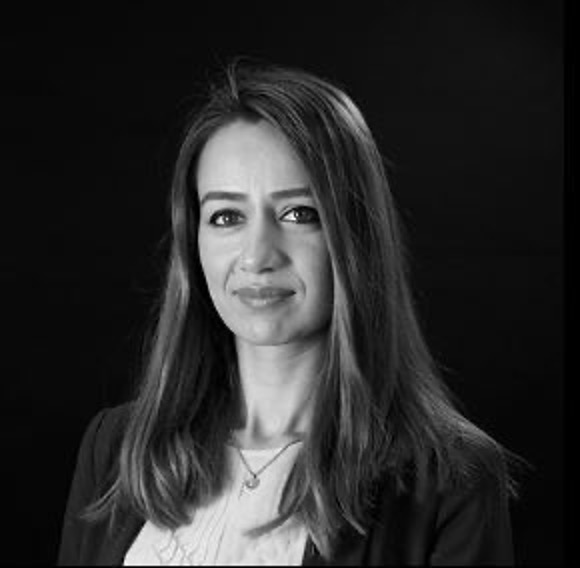
Dr. MARYAM MIRSEPASSI PhD 2023
Maryam Mirsepassi is an OAA intern architect with the Ontario Association of Architects, a project manager, and a landscape designer. Maryam was born and grew up in Tehran, Iran. She received a Bachelor of Architecture from Tehran University and a Master of Landscape Architecture from Shahid Beheshti University, Tehran, Iran. Maryam’s research areas include theories of imagination, the imaginal world, Persian gardens, miniatures, and architecture, specifically in the sixteen century in Iran.
The Imaginal Garden: Imagination and the Persian Garden in the Mystical Philosophy of Shahab Al-Din Suhrawardi
Over the past several decades, many of the gardens and parks built in Iran have been affected by a lack of attention to their design and details. One reason for this flaw is an absence of awareness of the role of the notion of imagination in Persian gardens. This dissertation investigates the relationship between the Persian garden and the imaginal world of Shahab al-Din Suhrawardi (1154-1191), a twelfth-century Persian philosopher. He describes the imaginal world as between the immaterial and material and between light and darkness. He refers to the imaginal world in his works, specifically in his Persian treatises, where he uses the elements of the Persian garden to portray this world. The research studies these elements and explores the symbols and metaphors he uses to reveal his philosophical thoughts.
In order to examine the relation between Suhrawardi’s thoughts, including his imaginal world, and the Persian garden, this dissertation also investigates the elements of the Persian garden in the three arts of literature, miniatures, and gardens. One case study was chosen for each art form. The case studies have been selected from the fifteenth and sixteenth centuries, a period in which art and architecture, including gardens, flourished and where Suhrawardi’s concepts were taught in the schools.
This dissertation aims to determine the ideas that informed the design of Persian gardens and their elements. This could help contemporary architects and landscape designers better understand the reasoning behind their designs and subsequently arrive at meaningful and eternal works.
Supervisor: Dr. Stephen Fai, Director CIMS, Professor Co-Chair, PhD Architecture, ASAU, CU
Advisor: Dr. Federica Goffi, Professor, Co-Chair PhD Architecture, ASAU, CU
Advisor: Dr. Hooman Koliji, Associate Clinical Professor, Executive Committee Member, School of Architecture, Planning and Preservation, University of Maryland, reACT ThinkTank

Dr. BRYNNE CAMPBELL PhD 2022
Brynne Campbell earned her doctorate in November 2022. Her dissertation, “Marketing Architecture in Canada: Exploring the Architecture Profession’s Understanding and Use of Marketing: 1955 – 1985 to Present,” explores the Canadian architecture profession’s historical use and understanding of marketing, as discussed through professional journals and resources written for and by architects. Her research takes a multi-method research approach to explore the questions and issues of marketing architecture in Canada. Emphasis is placed on The Canadian Architect magazine as a critical voice for the profession in Canada. She has presented her research globally and recently presented at the Ontario Association of Architects (OAA) conference in 2023. Dr. Campbell is currently working with Routledge on a book based on her dissertation. Dr. Campbell is the marketing director at Figurr Architects Collective, a medium-sized architecture firm with offices in Montreal and Ottawa. She is passionate about architectural storytelling and helping architects communicate the value of their work. She has been actively involved in national programs, projects, and education for the architecture profession.
Architecture Firm Marketing in Canada
Architects and scholars have suggested that the architecture profession is confused about what they do, and has trouble communicating the architect’s role and value to society. This issue is explored within the Canadian context through the ‘project of architecture’ – POP // CAN // CRIT 2017: Marketing and Communication of Architecture which took place on October 27, 2017 in Toronto, Canada. This symposium brought together professionals in the architecture industry to discuss the perceived role of marketing. It sought to open up the conversation on marketing for the Canadian architecture profession and serves as a resource for the dissertation research.
Building on this event, the dissertation employs a discourse analysis approach to the books, professional journals and documents written for and by architects, between 1955 – 2015, with the aim to see how the Canadian architecture profession’s relationship with business and marketing evolved. Emphasis is placed on Canadian Architect as the overarching voice of the profession in Canada since its establishment in 1955. Finally, through case studies, this dissertation looks at how marketing may contribute to architectural practice and whether marketing is embedded in architectural firms’ philosophies and strategic planning.
Supervisor: Dr. Federica Goffi, Professor, Co-Chair PhD Architecture, ASAU, CU
Advisor: Michel Rod, Dean of Business, University of New Brunswick
Advisor: Stephen Fai, Professor, Director CIMS, Co-Chair PhD Architecture, ASAU, CU
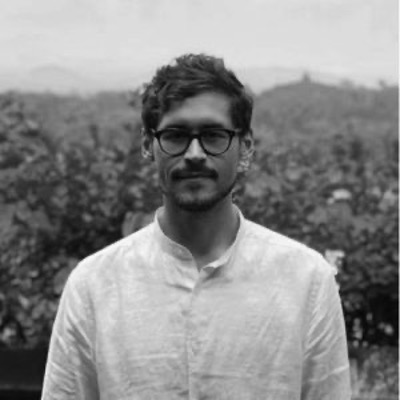
Dr. JESSE RAFEIRO PhD 2021
JESSE RAFEIRO is presently a postdoctoral research fellow at Tokyo College at the University of Tokyo. The college is part of the Institutes for Advanced Studies and acts as an interface connecting the university to international researchers and institutions from a broad range of disciplinary backgrounds. Here he is advancing the lines of investigation he initiated during his doctoral studies at the Azrieli School of Architecture and Urbanism, which were completed in October 2021. Presently, he is merging his expertise in digital architectural heritage and environmental theory to explore and communicate historical “forms-of-life” imbued with ethical significance for the future. These projects, involving lost history in convents and monasteries in Portugal, focus on revealing the intangible histories and ecological principles of places through collaboration with museums, municipalities, historians, and other specialists. This research is situated within an interdisciplinary environment at Tokyo College that provides a lively forum for interdisciplinary dialogue across the humanities, social sciences, and natural sciences. In the College’s “Sustainability and Society” research group, Jesse also maintains his interest in pedagogy. Alongside his colleagues, he is presently delving into the evolving dynamics of learning amidst varied ecological and social challenges, prompting a critical examination of prevailing learning theories in light of our planet’s environmental degradation.
Fiction as Pedagogy: Toward a De-Anthropocentric Architectural Education
Critiquing the anthropocentric dispositions of architectural education, the dissertation introduces a “de-anthropocentric” vector of ethical thinking through fiction as a form of pedagogy. The term de-anthropocentric as opposed to non-anthropocentric here posits the nonhuman animal as an important dimension of architectural consideration while acknowledging the limit to understanding or advocating on behalf of the nonhuman other. By problematizing anthropocentrism in this way, the research participates in concurrent discourses in philosophy, education theory, anthropology, biology and literature studies that challenge the inherited biases of Western ontology and epistemology. Recognizing the predominance of education in structuring these biases, the research takes inspiration from experimental approaches in posthuman education studies that historically situate and reorient definitions of the human and disciplinarity in an age of extra-human responsibility. Toward this, the dissertation investigates three trajectories in literature studies as departure points: the weird realism of H.P. Lovecraft, the multispecies worlding of Haraway and the graphic portrayal of animal subjectivity in Herman’s narratology beyond the human. From these examples, the dissertation theorizes nonhuman narrative, representation and worldbuilding approaches in an architectural context. Finally, locating the early Renaissance as a period of major educational transition in architecture, the research analyzes Filarete’s Libro architettonico (1461-63) as a model of fiction-based pedagogy in the present. Written as a continuous fictional dialogue disrupted by digressions into the natural environment, animals, anecdotes, fictional buildings and social practises, the work offers a multifaceted educational model appropriate for questioning human-nonhuman relations in the present. Between text and image, the work instructs by imagining the ideal city of Sforzinda through the narrative device of the golden book: a source of ancient literary wisdom. Following an analysis of Filarete, the dissertation presents a re-interpretation of Filarete’s golden book as a pedagogical device to channel critical insight from literature and other disciplines into architectural education.
Supervisor: Dr. Stephen Fai, Professor, Director CIMS, Co-Chair PhD Architecture, ASAU, CU
Advisor: Dr. Claudio Sgarbi, Adjunct Professor, ASAU, CU
Advisor: Dr. Michael Jemtrud, Professor, The Peter Guo-hua Fu School of Architecture, McGill
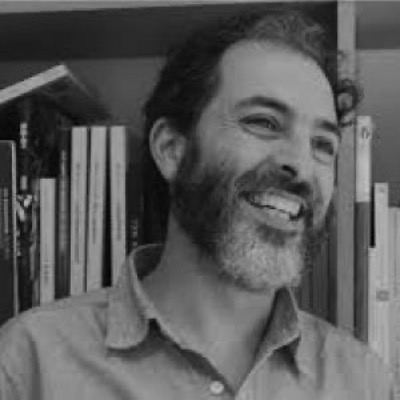
Dr. JORGE RIVERA GUTIERREZ PhD 2021
JORGE RIVERA GUTIERREZ was an Ontario Trillium Scholar, and is an architect working both in the design-build and videography fields. He conducted his doctoral studies at the Azrieli School of Architecture and Urbanism at Carleton University from 2016 to 2021. In 2007, he graduated from the Architectural History and Theory master’s program at McGill. His Guadalajara-based office, Departamento de Arquitectura, has been primarily invested in developing a design-build practice in collaboration with local craftspeople. He has also ventured along his brothers in making short films, video documents and video installations. His first video installation debuted at the 2016 Venice Biennale of Architecture, within the Mexican pavilion. Interested in the intersection of narrative, memory, time, and architecture. His research focuses in exploring the capacity of film to convey the experience of place, and in turn as means to inform architectural thought and imagination. He currently works at Affleck de la Riva Architectes in Montréal as an architectural designer. He has participated in a variety of projects of different scales and typologies: schools, public libraries, landscape architecture, and restoration of historic buildings. He has independently continued his research on film and architecture. He has written for Severin Films and is currently curating an exhibit at the Museo Experimental el ECO in Mexico City focused on construction craftspeople and their tools.
The Affective Threshold; or, The Sensational Account of Place Through Film
Most human stories must take place somewhere, architecture is rarely absent in film. Architectural environments serve essential roles in the unfolding of emotions and the experience of place in cinema. Conversely, cinema unravels the affective qualities of architecture. This dissertation is concerned with how filmmaking uses architectural atmospheres to frame a story and allow its characters to unfold fully in these emotional spaces, asking what is there to learn for architects from the portrayal of architecture as a stage for fiction. My research deploys film hermeneutics, atmosphere theory and phenomenology to propose that film is not only a visual medium but a conveyor of rich, haptic experiences, and as such it bears the capacity to speak to us about the poetic, emotional, and experiential richness of place and architectural atmospheres. To this end, I focus on two key elements to support this argument. First, a specific style of filmmaking: the school of slow cinema and the cinematic long-take, as a way of engaging our emotions into the spatial experiences that film can offer. Second, the house as a location, mainly as a place for grief and thus, emotional reconstitution. By bringing these two elements together, the thesis sheds light into the affective entanglement we form with our houses, and the capacity of cinema of enriching critical architectural discourse about the places we dwell in our every-day lives.
Supervisor: Dr. Federica Goffi, Professor, Co-Chair PhD Architecture, ASAU, CU
Advisor: Dr. Stephen Fai, Professor, Director CIMS, Co-Chair PhD Architecture, ASAU, CU
Advisor: Alberto Perez-Gomez, Saidye Rosner Bronfman Professor, The Peter Guo-hua Fu School of Architecture, McGill
Advisor: Marc Furstenau, Associate Professor, Film Studies Program Director, Carleton University

Dr. PALLAVI SWARANJALI PhD 2021
PALLAVI SWARANJALI is a full-time faculty and Program Coordinator of the Bachelor of Interior Design Program, Algonquin College, Ottawa. She is an Intern Architect with the Ontario Association of Architects, Canada, working on projects like adaptive reuse and affordable housing in Ontario and New Brunswick. Her research centers on the relationship between architecture and storytelling, looking at non-conventional modes of architectural representation that combine the normative and the fantastical, and how they meaningfully transform architectural making and experience. She is the founder Director of Canadian Centre for Mindful Habitats. She has led and participated in several symposia, conferences, exhibitions, publications, and architectural practice, negotiating and probing contemporary issues in pedagogy, practice, and public representation of architecture. She is one of the editors for Architectures of Hiding: Crafting Concealment | Omission | Deception | Erasure | Silence (Routledge 2024) together with Rana Abughannam, Émélie Desrochers-Turgeon and Federica Goffi. She is currently working as editor for Mindful Habitats’ peer-reviewed journal Adda: A Place for Conversations, Volume 1 titled Mindful Conversations: Design and Culture.
The Subjunctive Pause
The Dissertation titled “the Subjunctive Pause,” takes a critical look at architectural storytelling that imparted a polysemic and contronymic nature to architecture and its representation in the works of Indian architect, Balkrishna Doshi (b.1927). The dissertation studied three modes of architectural storytelling that Doshi adopted, namely, tectonic (through his buildings), visual (through his miniature painting style illustrations), and literary (through his written stories). His non-conventional ways of storytelling disregarded the notion of architectural creation and representation as a formulaic and precise visual image and explored the possibility of converting them into instruments of imaginative dreaming for making, inhabiting, and conversing in architecture. Doshi’s built work and its representation, created a “pause”- bringing in a reorientation to present the invisible by offering a poetic and syncretic virtual world. This “pause” solicited engagement. It was a clever contraption to engage in an imaginative understanding, conceptualization, inhabitation, making, and reading of built work and its representation, inculcating novel points of view to engage in a broad and deep architectural discourse. This dissertation argues that the “pause” was a quality of architectural conceptualization, experience, and representation that imparted to his architecture a subjunctive character that opened a space of translation between the author (architect) and the reader (users and others who are involved in the architectural creation) to foster an imaginative assimilation of architectural activities, in which they viewed architectural creation not only through a positivistic lens, but allowed the imaginative, oneiric, and fantastical to contribute. For Doshi, architectural creation assumed the form of a verb–the act of dreaming collectively a numinous architecture, rather than a substantive–the architecture of production that celebrated the singularity of the architect or the building as a seductive and commercialized image ignoring what he considered the basic tenet of architecture, which is its ability to promote a joyful and virtuous human life. The subjunctive act of dreaming that Doshi demonstrated and induced for others to practice created a contronymic condition through storytelling, by evoking the latent presence of a virtuality, the particularity of which was its ability to make architecture and its representation become analogous, vying for each other’s status and qualities.
Supervisor: Dr. Federica Goffi, Professor, Co-Chair PhD Architecture, ASAU, CU
Advisor: Dr. Stephen Fai, Professor, Director CIMS, Co-Chair PhD Architecture, ASAU, CU
Advisor: Dr. Joy Sen, Professor, Indian Institute of Technology, Kharagpur, India
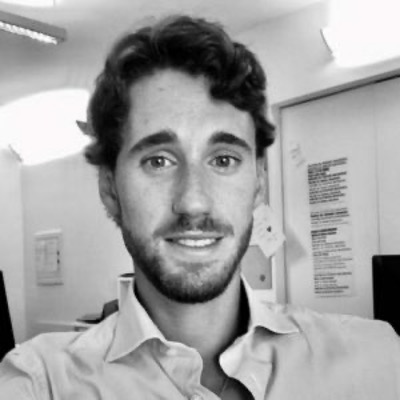
Dr. DAVIDE MEZZINO PhD 2017
DAVIDE MEZZINO is Associate Professor (Tenured Teacher) at the Department of Humanities, IULM University, Milan, Italy. He holds a Ph.D. in Architecture, from Carleton University, Ottawa and a Doctorate in Cultural Heritage, obtained at the Politecnico di Torino. Since 2023, he is in charge of one of the three research units of the Project of Significant National Interest (PRIN) “Know.it”. In 2022, he received an expert contract at the EUROPEAN COMMISSION – Research Executive Agency (REA) for the evaluation of projects submitted to the HORIZON calls. From 2018 to 2021, at the Fondazione Museo delle Antichità Egizie di Torino, he worked as Digital Expert for the development of new paradigms for the management and dissemination of cultural heritage, through digital techniques and tools. From 2014 to 2017, at the Carleton lmmersive Media Studio (CIMS), Ottawa, he developed advanced skills and abilities in the field of three-dimensional surveying and modeling, as well as skills in the use of cataloguing and management systems for built heritage at the architectural and urban scale. Within CIMS he has also conducted field research projects in Bahrain, Canada, Morocco, Mexico, and Myanmar. Since 2013, qualified to practice as an Architect in Italy and in the European Union. Since 2010, he carried out research and training activities at Universities, Foundations, Companies and Institutions in Italy and abroad (Carleton University, Università di Genova, Università degli Studi di Torino, Università Telematica Internazionale UniNettuno, Universidad de Guadalajara, Politecnico di Torino, Politecnico di Milano, Scuola di Amministrazione Aziendale-SAA, Yangon Technolgical University, Fondazione CRT, Fondazione Giovanni Goria, Fondazione Paolo Ferraris s.r.l., URBIT s.r.l., Fondazione Scuola dei Beni e delle Attività Culturali, Fondazione Sicilia, Istituto Superiore sui Sistemi Territoriali per l’Innovazione-SiTI; United Nations System Staff College).
Cultural Built Heritage’s Tangible and Intangible Dimensions and Digitalization Challenges
This research is based on the ongoing debate on the strengths and challenges brought about by the so-called ‘digital revolution’ in the field of the conservation of Cultural Built Heritage. Within this framework, this study analyzes how the dynamic relationship between tangible and intangible heritage strongly affects the understanding of a site as cultural heritage. This relationship influences the conservation actions adopted by conservators and decision-makers and shapes the values that drive, and impact on, conservation choices. The complex relationships between tangible and intangible dimensions of cultural heritage have been, until recently, surprisingly underestimated in scientific research. A possible explanation lies in the limited amount of multidimensional and interdisciplinary approaches applied by scholars of different disciplines, often interested in sectorial analysis of either the tangible or the intangible dimensions of cultural built heritage. The research moves in the direction of integrating such dimensions through a comprehensive approach. The project aims to demonstrate that an understanding of the role of intangible dimensions of built heritage can orient the conservation process, moving towards a more inclusive approach based on respect for different context-based perspectives and interpretations of the cultural dimensions of heritage conservation, preservation, and restoration.
The research hypothesis is that digital documentation workflows have a strong potential for integrating different sources of information, based on both qualitative and quantitative analysis, by processing and integrating knowledge about tangible and intangible dimensions of built heritage. The research proposes an enhanced approach, called WikiBIM, which builds on a combination of rapid ethnographic appraisal methods and IT-supported techniques for data acquisition, processing and management. The research approach is tested on the concrete case of the Loka-hteik-pan temple in Bagan, Myanmar. Conclusions about the effectiveness of the approach highlight the importance of integrating local knowledge, sometimes transmitted only through oral means, in mainstream digital design tools, such as Building Information Modelling (BIM), to improve the social, cultural, and environmental sustainability of built heritage conservation.
Supervisor: Dr. Mario Santana Quintero, Professor, Architectural Conservation and Sustainability Engineering, CU
Co-Supervisor: Dr. Fulvio Rinaudo, Full Professor, Dipartimento di Architettura e Design, Politecnico di Torino
Co-Supervisor: Dr. Carla Bartolozzi, Full Professor, Dipartimento di Architettura e Design, Politecnico di Torino
Advisor: Dr. Manuela Mattone, Associate Professor, Dipartimento di Architettura e Design, Politecnico di Torino
Advisor: Dr. Grazia Tucci, Associate Professor, Ingegneria Civile E Ambientale (Dicea), Università degli studi di Firenze
Advisor: Dr. Stephen Fai, Professor, Director CIMS, Co-Chair PhD Architecture, ASAU, CU
⟶ PhD Candidates

NICOLAS ARELLANO RISOPATRON is a PhD candidate at Carleton University focusing on coding and digital models and their impact on architecture. He is currently a research team lead at the Carleton Immersive Media Studio (CIMS). In addition, he teaches BIM Fundamentals at Algonquin College and is the director of research of the Digital Building National Capital Region (dbNCR), a group dedicated to build and facilitate connections among AECO professionals. He worked at NORR Limited where he learned how to write scripts that allowed him to automate several solutions to repetitive production problems using algorithms and visual programming tools. He holds a Bachelor (2014) in Architecture from Universidad Catolica of Chile (UC) specialized in “Systems and Technologies” and certified in “Developing BIM Projects”. At UC he was Adjunct Instructor of “Building Techniques and Construction” and worked in the UC Timber Innovation Centre, which studies the benefits of wood for construction.
De-black boxing BIM
How could architects utilize BIM outside of proprietary software and closed file formats and why?
This dissertation talks about the use of computer coding in the field of architectural representation. It analyses the different ways in which coding can impact architecture. Since the 1970s, when computers became available to architects, this new human-computer relationship became a challenge for architecture in multiple fundamental aspects, such as representation, education, and practice. Half a century later, in the 2020s, computers are not only available to architects, but in most cases, they are indispensable. The term black box, to describe opaque computer processes has been used since the early 1940s. It has its origins in electronic circuits to describe a system that can be understood only in terms of its inputs and outputs but which process is not accessible or even visible to users. This dissertation introduces the terminology of ‘de-black box’ as a process that leads to understanding the process, parts, and connection of a system. The historian Antoine Picon states that “it has become unavoidable to enter into the black box of programming in order to make a truly creative use of the computer” (Picon 2006). There are several digital processes of architectural representation; one of the most popular today is Building Information Modeling (BIM). In the last two decades, BIM has become not only a possibility, but it is also mandated by governments in many countries. For this reason, I argue that it is imperative to understand both its potential and limitations. Chuck Eastman, one of the fathers of BIM explains in his BIM Handbook that “BIM is not a thing or a type of software but a human activity that ultimately involves broad process changes in construction”(Eastman 2018). Digital objects are coded to describe and represent real-life building components. This facilitates a dialog with the digital model that was previously not possible. BIM could be defined as a communication and collaboration tool originally created to connect people, processes, and data. However, that is not exactly the way the Architecture, Engineering, and Construction (AEC) industry is using BIM. The status quo is to work with proprietary solutions and closed file formats. The issue is that when working with closed formats, an important part of the design and production process becomes a black box. The author states that two conditions must be met before architects can fully de-black box the digital toolbox. First, the source code—or list of human-readable instructions that define a computer program—of the software used by architects must be open and accessible for examination and modification. Secondly, architects must deeply understand the software they use, which means that they must have a working knowledge of computer programming. This research warns about the obstacles that architects must overcome in order to benefit from a fruitful relationship between software and architecture, putting the goal of designing better buildings for people at the core. Computers offer a tremendous contribution to our architectural exploration if we continue to explore innovative research that includes human input with computer logic and processing power to arrive at collaborative solutions.
Supervisor: Dr. Stephen Fai, Professor, Director CIMS, Co-Chair PhD Architecture, ASAU, CU
Advisor: Dr. Federica Goffi, Professor, Co-Chair PhD Architecture, ASAU, CU
Advisor: Dr. Azam Kahn, Adjunct Professor of Computer Science, University of Toronto

KATIE GRAHAM joined the Bachelor of Media Production and Design (BMPD) faculty in the School of Journalism & Communications, Carleton University, Ottawa, in 2019 as an instructor. The unique degree created through a collaboration between the Journalism program and the School of Information Technology focuses on how new and emerging digital tools can be used for fact-based storytelling. The program connects to Katie’s research on digital storytelling in architecture, in which she incorporates her experience and knowledge into the curriculum on visual communications, digital media, and storytelling topics. In the 2023-24 academic year, Katie acted as interim program director, where she focused on creating a strong sense of community for the BMPD students. She has won multiple teaching awards, including the Teaching and Learning Services’ “Excellence in Blended and Online Teaching Award” in 2021 and the Faculty of Public Affairs’ “Teaching Excellence Award” in 2024. Katie continues to collaborate with her former PhD classmates, including organizing a webinar series in 2022 with Dr. Pallavi Swaranjali called “Negotiating Digital Space in Culturally Significant Storytelling.” When she is not busy with her role as faculty, Katie continues to work on her PhD dissertation, focusing on virtual reality storytelling of space and architecture.
Supervisor: Dr. Stephen Fai, Professor, Director CIMS, Co-Chair PhD Architecture, ASAU, CU
Advisor: Dr. Federica Goffi, Professor, Co-Chair PhD Architecture, ASAU, CU
Advisor: Dr. Michael Jemtrud, Professor, The Peter Guo-hua Fu School of Architecture, McGill

KEN PERCY is a PhD candidate in the PhD program in Architecture at Carleton University. His research interests examine the tension between the fields of architectural representation and digital fabrication. While developing his dissertation Ken has been working at the Carleton Immersive Media Studio (CIMS) where he has been leading projects on digital documentation as well as establishing the new CNC fabrication lab at the school of architecture. Highlights of his projects include digital documentation of the Kasbah of Taourirt in Morocco, photogrammetric recording of historic wall paintings in a church in the Peruvian Andes, and laser scanning and surveying the Parliament Buildings in Ottawa for rehabilitation. Further, in collaboration with public works, Ken has been developing a protocol for digitally milling the new doors for the Senate after relocation to the Government Conference Centre on Rideau Street.
Dissertation Abstract
The development and widespread adoption of Computer Numerically Controlled (CNC) technology has both challenged and animated the practice and study of architecture. Developing in tandem with the hardware, Computer Aided Design (CAD) software has fundamentally challenged the field of architectural representation. On the surface CAD software appears to produce digital versions of hand-drawn plans, sections, and elevations but there are a number of key differences beyond the physical construction of the drawing tools. There are technical aspects of the CAD drawing which allow the lines drawn to be assigned as tool paths in CNC software that directly control the direction and physical movement of CNC tools. Related to this both physically and philosophically there is a representation of time in the layers of an architect’s traces that are lost in digital layers of CAD software but re-emerge in the software that controls the tool paths. For these reasons I hypothesize that digital tool paths made from digital drawing and modeling software represent a new mode of architectural representation. While the new technologies displace established architectural mediums, certain historical precedents allow us to examine the nature of the changes that arise from the displacement and offer us insight into our present condition. The first treatise of the 16th century French architect Philibert Delorme (1514-1570) illustrates both personal and professional experience with the changing modes of design representation at a time of professional upheaval in Europe. Beginning with Delorme, this study is divided into three parts. First, a close reading and original translation of Book I of his treatise Nouvelles inventions pour bien bastir et a petit fraiz provides us with context for the study of new and emerging digital tools for representation in architecture. Second, a theory is developed around the analogous connection that exists between the work of Delorme and contemporary CNC-related tools of representation. Finally, employing CNC machines and the new mode of representation I will develop a series of projects that demonstrate through juxtaposition the nature of the new mode of architectural representation.
Supervisor: Dr. Stephen Fai, Professor, Director CIMS, Co-Chair PhD Architecture, ASAU, CU
Advisor: Dr. Federica Goffi, Professor, Co-Chair PhD Architecture, ASAU, CU
Advisor: Dr. Simone Garagnani, Professor, Architecture School, University of Bologna, Italy

RYAN STEC is a PhD Candidate in architecture, an artist, designer, educator and producer working in both research and production. Interested in the cross sections of technology, creativity and the built environment, his most recent work is focused on art interventions that redefine how we experience the city around us. His passion for developing cultural discourse through artistic production has guided his heavy involvement in the artist-run culture of Ottawa since 1998.
Dissertation Abstract
This research is concerned with the temporary and informal aspects of the spaces of the city and the political potential for design intervention. Drawing on the theoretical work of Bruno Latour and Actor Network Theory it outlines the possibilities for an object-oriented politics for design, that is a theory of politics which includes objects into the realm of action. Sited in the Centretown neighbourhood of Ottawa, this research will combine a counter mapping of the informal boundaries of the city with the design of temporary material interventions exploring the potential action of objects or the making of public things. The concept of a public thing extends the ideas about a pragmatic public as described by John Dewey in The Public and its Problems (1927), where the public can be made tangible and specific through the examination of issues. In this sense objects become public things when they become a node in a network of issues which specify a public. These two elements will form the basis of a prototype called the Action Information System (AIS). An AIS will combine geospatial dimensions of data with temporal dimensions as a new representational tool for both mapping and politics, demonstrating the possibilities for participation in the city and politics by both human and non-human actors.
Supervisor: Dr. Federica Goffi, Professor, Co-Chair PhD Architecture, ASAU, CU
Advisor: Dr. Claudio Sgarbi, Adjunct Professor, ASAU, CU
Advisor: Dr. Chris Salter, Professor, University Research Chair, Concordia University

CRISTINA URECHE-TRIFU, OAA is a practicing architect and Ph.D. student with a focus on construction and conservation. After completing her architectural training in Romania, Cristina then obtained an M.A. in heritage conservation from Carleton University before starting her PhD studies. In addition to her research, she has also gained significant teaching experience, serving as Teaching Assistant for courses ranging from the basics of heritage conservation and conservation studio, to architectural history and urban planning. She has co-organized a conservation charrette bringing together students from design, conservation, and engineering with the industry, and has presented at national and international conferences. In parallel to her academic career, Cristina has been actively involved in the profession, having worked on a large number of conservation projects in and around the Parliamentary Precinct in Ottawa. Combining her passion for practice with her academic career, her research interests range from craftsmanship and materials conservation to studying the intersection between construction and conservation and the way in which conservation principles and theories get transformed during the actual project implementation.
Constructing Conservation. The role of decision-making, contracting and legislation in architectural conservation projects
This dissertation seeks to examine the process of construing and constructing architectural conservation, tracing the process from inception to final object, and discussing the impact of forcing conservation projects to mould themselves into an increasingly fragmented and prescriptive construction industry. Starting with a brief overview of architecture, construction and conservation history the first part of the research will discuss the relationships between theory and practice and between architecture and conservation and will discuss the framework within which conservation theory and architectural practice currently exist. Outside of the preliminary part which discusses heritage conservation and the architectural profession in more general terms, the remainder of the work will be focused on Eastern Ontario. This area has been chosen as it is home to some of the largest contemporary conservation projects in the country and it is expected that lessons learned and precedents from these projects will then be applied to smaller projects around the country. Documentation regarding public tenders for conservation projects will be analyzed, with respect to both consultant (professional) services and the actual construction part. The information gathered in this way will be supplemented with more specific case-studies from the author’s practice, in order to offer additional insight on aspects that cannot be gleamed and understood sufficiently from reviewing documentation or through interviews. Finally, the findings and implications of the research will be discussed in detail, with a focus on proposing a revised methodology for a more collaborative decision-making and implementation process on conservation projects. As a way to test this methodology, the project of architecture will consist of a heritage charrette which will also serve to expose students to the various stakeholders in the conservation project, including some of the participants that are often missing from discussion on conservation theory and/or practice: the owners, the contractors and the sub-trades.
Supervisor: Dr. Mariana Esponda, Assoc. Prof., Coordinator Architectural Conservation and Sustainability, ASAU, CU
Advisor: Dr. Stephen Fai, Professor, Director CIMS, Co-Chair PhD Architecture, ASAU, CU
Advisor: Dr. Federica Goffi, Professor, Co-Chair PhD Architecture, ASAU, CU

WARREN BORG is an architect with experience in Nunavut, Canada. He leverages a depth of Northern construction understanding to deliver projects that balance operational efficiency, building performance, design team coordination, and fiscal realities. Warren has directly coordinated projects for several institutional fields, including health care, justice, education, and social services.
His PhD focus at Carleton University is on the historical impacts of euro-Canadian housing typologies within the social-political landscape of Iqaluit, Nunavut, from 1942-1965. Warren’s passion for architecture has led him to be a role model for emerging design professionals. One of his guiding principles is that “pride of place is sustainable” and holism is essential to creating sustainable environments.
Transformative Architecture during Sangussaqtauliqtilluta from 1941 to 1965: The Beginnings of Iqaluit (Former Frobisher Bay)
This dissertation investigates the reciprocal relationship between architecture in Iqaluit, Nunavut, and the Iqalungmiut community during Sangussaqtauliqtilluta (the period of disruption) for Inuit, and a period of uncertainty for non-Inuit from 1941 to 1965. It explores the impact of diverse socio-political influences, both internal and external, on the community, and examines how architectural developments shaped the cultural and societal functions of the Iqalungmiut. In the 1940s, American and Canadian organizations maintained a symbiotic relationship with Inuit, fostering societal development; however, this relationship eventually became strained. This study analyzes the influence of military architecture and other infrastructural typologies from Canada and the U.S. during Sangussaqtauliqtilluta on Iqaluit’s society, emphasizing its unique heritage and distinct influence compared to other Arctic communities. The dissertation further examines the role of architecture as a mediator of colonialism in Inuit communities, a topic often overshadowed by anthropological perspectives. It aims to demonstrate how architecture affected Inuit traditional lifestyles, driven by diverse motivations such as geopolitical necessity and imperialism. Focusing on the adaptation and evolution of Iqaluit’s built environment during Sangussaqtauliqtilluta, the study highlights issues such as inadequate and inappropriate housing. Drawing on the author’s experience as a resident of Iqaluit from 2010 to 2021, the research explores the city’s social structuring and architectural adaptations over time.
Supervisor Dr. Federica Goffi, Professor, Co-Chair PhD Architecture, ASAU, CU
Advisor: Beverly Cousins, Inuit Elder, Community and Government Services (Facility Planning), Government of Nunavut
Advisor: Dr. Stephen Fai, Director CIMS, Professor Co-Chair, PhD Architecture, ASAU, CU
Advisor: Dr. Kelly Crossman, Associate Professor (retired), ASAU, CU
⟶ PhD Students
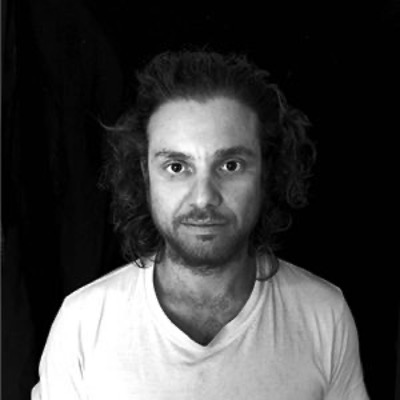
MARCO IANNI received his professional designation as a member of the Ontario Association of Architects in 2017 while working with Douglas Cardinal. He is enrolled in the PhD program in Architecture at Carleton University while working in the CIMS lab and teaching Design at Algonquin College. Marco graduated from Carleton University’s Architecture program in January 2012 with a Master of Architecture (M.Arch), with a master’s thesis entitled “Uncanny Dynamism: Can Neuroscience Inform our Understanding of the Modern City?” During his studies, he played for the Varsity Men’s Soccer team in 2004 and 2008. His interests extend the confines of architecture. He trains multiple times a week in various Eastern and Southern Asian systems under Sifu William Hearst of the Hearst Academy of Martial Arts.
Supervisor: Dr. Federica Goffi, Professor, Co-Chair PhD Architecture, Co-Chair PhD Architecture, ASAU, CU
Co-Supervisor: Dr. Claudio Sgarbi, Adjunct Professor, ASAU, CU
Advisor: Dr. Stephen Fai, Professor, Director CIMS, Co-Chair PhD Architecture, ASAU, CU
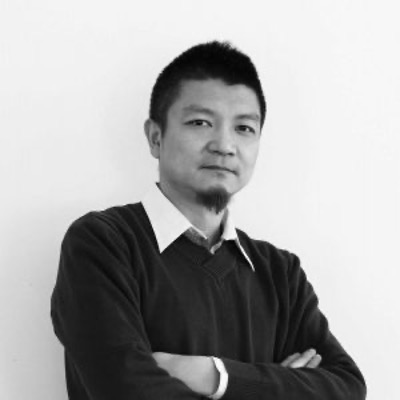
YU ZHENG is an Architectural Heritage Conservation Architect who has been engaged in architectural and related cultural heritage conservation for nearly two decades. He received a bachelor’s degree in architecture from the School of Architecture of Tsinghua University in 1999. After three years of residential planning and design, he graduated from the same school in the study of architectural history and conservation theory. He obtained his master’s degree in engineering in 2005 and continued to work in the field of heritage conservation (master planning, surveying and mapping, restoration design, and site technical services). Since 2014, he has been general manager and director of Beijing GuoWenYan Conservation Science and Information Technology Co., Ltd. He applied the various digital recording technologies to the murals and painted sculptures investigating work which closely integrated with heritage buildings. He published The Digital Surveying and Mapping Report on the Mural of Baofan Temple (2018), and the Specification for Digitalized Surveying and Mapping of Wall Painting in Historic Building (2017).
Supervisor Dr. Stephen Fai, Professor, Director CIMS, Co-Chair PhD Architecture, ASAU, CU
Advisor Dr. Mario Santana Quintero, Professor, Architectural Conservation and Sustainability Engineering, CU
Advisor: Dr. Maurice Murphy, Professor, Director Virtual Building Lab, Technological University of Dublin
Advisor: Dr. Chang Liu, Professor, Institute of Architectural History and Conservation, School of Architecture, Tsinghua University

DAMIANO AIELLO is an Italian building engineer enrolled in the PhD Program in Architecture at the Azrieli School of Architecture and Urbanism, Carleton University. He is actively involved with Carleton Immersive Media Studio (CIMS), a research lab affiliated with the ASAU focused on advanced digital technologies and hybrid forms of representation.
He received his Master’s Degree in Building Engineering and Architecture from the University of Catania in 2018. During his studies, he was awarded two Erasmus+ scholarships to work in Spain and in Canada. Prior to his admission to the PhD program, Damiano worked for an engineering firm in Italy and gained multiple research fellowships at the University of Catania and Politecnico di Milano to develop Virtual Reality experiences. In his professional work, he collaborated with the University of Catania on the design of the MuRa (Museum of Representation) exhibition and on the digitization and virtualization of Sicilian and Cretan cultural heritage. His research interests are centred around digital surveying techniques, 3D modelling, digitization of cultural heritage and Virtual Reality.
Supervisor: Dr. Stephen Fai, Professor, Director CIMS, Co-Chair PhD Architecture, ASAU, CU
Advisor: Dr. Claudio Sgarbi, Adjunct Professor, ASAU, CU
Advisor: Dr. Natalia Escobar, Assistant Professor, ASAU, CU

SERKAN TAYCAN is a PhD student at the Azrieli School of Architecture & Urbanism, Carleton University. He holds a BA (2003) in civil engineering and completed his MA (2014) in Visual Arts at Sabancı University, Istanbul and in Photography at Aalto University, Helsinki. Serkan is a visual artist whose work has been exhibited in various museums and galleries including the Venice Architectural Biennial, MAXXI, MuCEM, and the Istanbul Museum of Modern Art. Between 2015-2018, he taught courses on visual arts in the public realm, and architectural photography. In his PhD research, he focuses on how infrastructural interventions alter water bodies, and their transformative effects on border ecologies.
Supervisor: Dr. Ozayr Saloojee, Associate Professor, ASAU, CU
Advisor: Dr. Lisa Moffitt, Associate Professor, ASAU, CU
Advisor: Dr. David Hugill, Assistant Professor, Department of Geography and Environmental Studies, CU
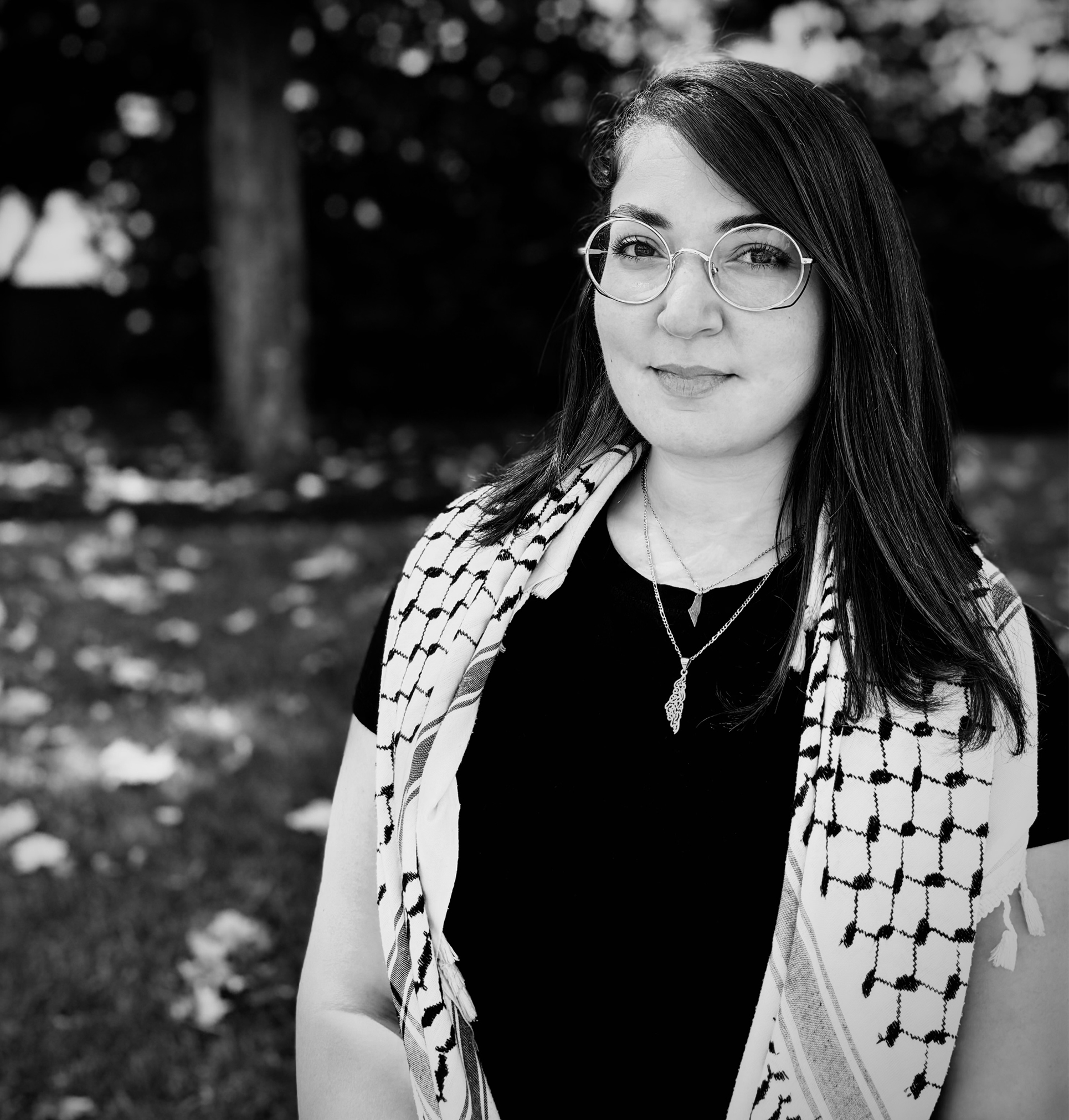
REEM AWAD is a PhD student in Architecture at Carleton University. She is a recipient of the SSHRC Doctoral Fellowship Award (2022-2025). Her doctoral research examines the socio-cultural and spatial-political implications of the temporary, in the colonization of Palestine. Since joining Carleton University in 2017, Reem has taken on various research and teaching roles and responsibilities, including contract instructor and teaching assistant at Carleton University, contract instructor at Algonquin College, and research team lead at Carleton Immersive Media Studio (CIMS). Reem is a licensed architect in Palestine and Jordan, where she practiced (2012-2017). She holds a Master of Architecture degree from Carleton University and a bachelor’s in architectural engineering from An-Najah National University, Palestine.
Supervisor: Dr. Ozayr Saloojee, Professor, ASAU, CU
Advisor: Dr. Federica Goffi, Professor, ASAU, CU
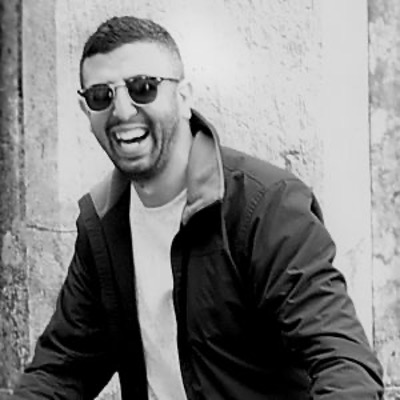
AHMED ELSHERIF is a PhD student at the Azrieli School of Architecture and Urbanism, Carleton University. He holds a BFA (2012) from Alexandria University, Egypt, where he worked afterwards in academia and research at different universities. He received the Erasmus+ grant (2016) for staff training mobility program – United Kingdom, and was awarded the Fulbright scholarship to pursue his MDesSE (2018) at Iowa State University. Prior to joining Carleton University, Ahmed worked as a Teaching Assistant in the United States, while pursuing his MFA and MS Arch at Iowa State University. His research interests span the nexus of architecture history, Critical Theory, and culture.
Supervisor: Dr. Natalia Escobar, Associate Professor, ASAU, CU
Advisor: Dr. Federica Goffi, Professor, ASAU, CU
Advisor: Dr. Menna Agha, Associate Professor, ASAU, CU
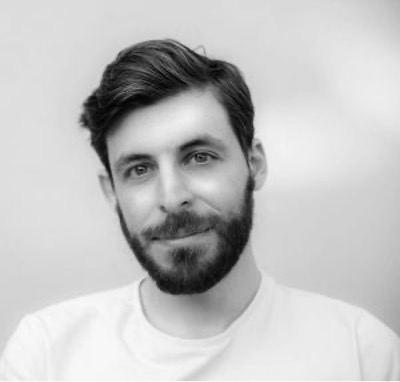
SIMONE FALLICA is a PhD student at the Azrieli School of Architecture & Urbanism since 2021. In July 2020 he obtained his civil and environmental engineering license. In March 2020 he completed his master’s degree in Building Construction at the University of Catania with a thesis focused on the virtual reconstruction of a Medieval church destroyed by the 1669 eruption of Mount Etna. Between 2016 and 2017, he received two Erasmus+ grants to carry out two internships in Spain and Canada. In the last years, he collaborated with the Department of Civil Engineering and Architecture of the University of Catania. His research interests are centered on architectural palimpsests, lost historical architecture, cultural heritage digitization and 3D modeling.
Supervisor: Dr. Federica Goffi, Professor, ASAU, CU
Co-supervisor: Dr. Stephen Fai, Professor, Director CIMS, ASAU, CU

SENA KURÇENLİ KOYUNLU is a Ph.D. student at the Azrieli School of Architecture and Urbanism, Carleton University. She obtained her master’s degree in the Department of Architecture, Restoration Program from Istanbul Technical University in 2022. Sena is a registered urban planner in Turkey and specialized as a heritage planner. Before joining Carleton, Sena had various experiences in the conservation of architectural heritage and was a research team member on archaeological excavations such as Adramytteion Archaeological Excavation and St. Thekla Archaeological Site Survey in Turkey. She specializes in GIS-based models of archaeological sites, and survey, restitution, and restoration of cultural heritage. Her research interests are concentrated on the rural and cultural landscape of Cappadocia, its multileveled settlement features and their conservation planning approaches. As well, it includes the digitization of architectural heritage by focusing on the rock-carved architecture and its relation to topography in Cappadocia, Turkey.
Supervisor: Dr. Stephen Fai, Professor, Director CIMS, ASAU, CU
Advisor: Dr. Federica Goffi, Professor, ASAU, CU
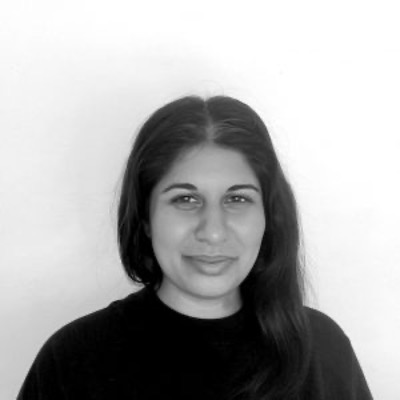
USHMA THAKRAR is PhD student at the Azrieli School of Architecture and Urbanism. She holds previous degrees from the Architectural Association, Columbia University, and Carleton University. Prior to joining the program, she held positions at several cultural institutions, including the Canadian Centre for Architecture in Montréal, arc en rêve centre d’architecture in Bordeaux, and the Remai Modern in Saskatoon and has taught at Waterloo University and the Architectural Association. Her research investigates the role of domestic architectural aesthetics in the modernization projects of imperialization and independence in late-colonial India.
Supervisor: Dr. Ozayr Saloojee, Professor, ASAU, CU
Advisor: Dr. Menna Agha, Associate Professor, ASAU, CU
Advisor: Dr. Ateya Khorakiwala, Assistant Professor of Architecture at Columbia University GSAPP

SHARMEEN SAYED DAFEDAR is a PhD student at Carleton University’s Azrieli School of Architecture and Urbanism. She has previously researched and studied the relation between traditional architecture and living crafts practiced in the city of Srinagar in Kashmir and discusses the same in her 2019 Masters thesis. Her research interests in architecture involve studying the relationships between the urban fabric of cities and the cultural productions brought about by its people in the present day and how it affects the architecture of the region. She is a registered Architect in India and has practiced as an Architect in Mumbai as well as a Designer in New York. She holds a Bachelor in Architecture degree from the University of Mumbai (2014) and a Master’s of Science in Architecture Studies from MIT (2019). She also indulges her creative side as an artist in intricate drawings and illustrations of heritage buildings. She has been passionate about architecture represented in works of science-fiction and has taught courses on the same in Mumbai.
Supervisor, Dr. Sheryl Boyle, Associate Professor, Director of CSALT, ASAU, CU
Advisor: Dr. Lisa Moffitt, Associate Professor, ASAU, CU
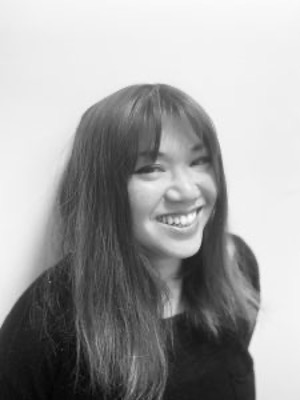
michelle corinne liu (they/she) is an artist, writer and PhD student at the Azrieli School of Architecture & Urbanism at Carleton University. They hold a BFA from York University (2014) and an MA in Theory and Criticism from Western University (2020). They are interested in de-professional practices, liberatory education and subversive possibilities in the minor textures of everyday life. They are inspired by abolitionist imaginaries, fugitive infrastructures, oceanic poetics, slow militancies and riotous possibilities towards collective liberation. Their work looks to architecture as a practice of radical study and seeks speculative and tactile approaches to space and politics that are often situationist, improvisatory and unfinished. Their current projects concern labour, time travel and collective practice.
Supervisor: Dr. Menna Agha, Associate Professor, ASAU, CU
Advisor: Dr. Ozayr Saloojee, Professor, ASAU, CU
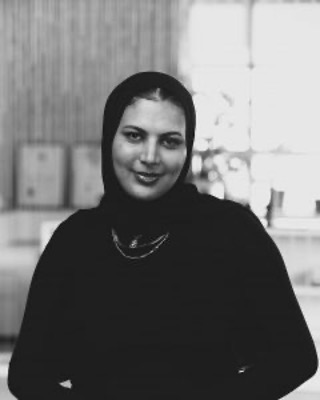
REHAB SALAMA is a PhD student at the Azrieli School of Architecture & Urbanism (ASAU) at Carleton University, where she also received her Master of Architecture (2021) and her Bachelor of Architectural Studies (2018). During her time at Carleton, Rehab has contributed as a Teaching Assistant as well as a Research Assistant at the Carleton Immersive Media Studio (CIMS), where she specialized in Building Information Modelling (BIM) and Heritage Building Information Modelling (HBIM). Currently, Rehab is a practicing OAA Intern Architect at Moriyama Teshima Architects. Her research investigates the relationship between the sacred and the everyday within the context of Cairo, Egypt, with a particular focus on Islamic cosmology and spaces of compassion.
Supervisor: Dr. Ozayr Saloojee, Professor, ASAU, CU
Co-supervisor: Dr. Menna Agha, Associate Professor, ASAU, CU
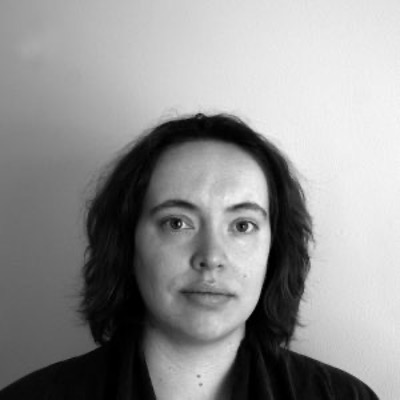
KRISTINE PROCHNAU is a student in the PhD program in Architecture at Carleton University. She has been a researcher at the Carleton Immersive Media Studio (CIMS) since 2017, focused on Digitally Assisted Fabrication using industrial robotic arms equipped for CNC milling in a variety of materials, including stone. She is currently leading a CIMS research team contributing to the Reconstruct initiative, in collaboration with the Facility for Architectural Research in Media and Making (FARMM), in building capture and BIM asset creation for panelized Deep Energy Retrofit (DER) applications. Her doctoral research investigates the potential for the adaptive reuse and retrofit of existing Canadian suburban houses to generate systemic change in their energy consumption and environmental impact.
Supervisor: Dr. Sheryl Boyle, Associate Professor, Director C-Salt ASAU, CU
Co-supervisor: Dr. Stephen Fai, Professor, Director CIMS, ASAU, CU
Advisor: Dr. Michael Jemtrud, Associate Professor, Peter Guo-hua Fu School of Architecture, McGill University
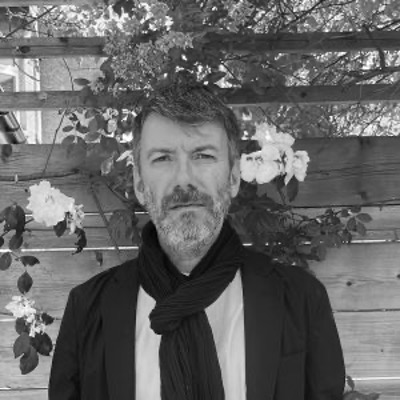
BRUNO SILVESTRE studied Architecture at the Department of Architecture of the University of Coimbra, Portugal, where he graduated in 2000. Since then, Bruno worked for various architectural practices in Lisbon and UK before setting his London-based practice in 2010. In recent years his work has been commended on several occasions – most notoriously, his social housing projects in Lisbon (in co authorship with Alexandre Dias and Luis Spranger) were featured at the Venice Biennale 2021 and were awarded the National Architecture Prize for Housing in 2022. Bruno has been involved in architectural education since 2007 and he is currently a Senior Lecturer in Architecture at Kingston School of Arts, London, where he has taught Design Studio and History & Theory of Architecture at both undergraduate and postgraduate levels. His research interests bridge practice and academia and are primarily devoted to methodologies of architectural design with a particular focus on the craftmanship of the sketch and its enduring relevance to contemporary architectural practice.
Supervisor: Dr. Federica Goffi, Professor, ASAU, CU
Co-supervisor: Dr. Jorge Figueira, Director, School of Architecture, Universidade de Coimbra
Advisor: Dr. David Leatherbarrow, Emeritus Professor, Stuart Weitzman School of Design, University of Pennsylvania,
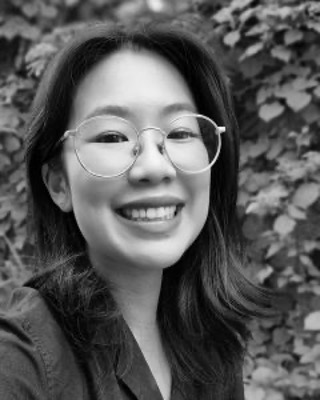
KITT MAN (She/Her) is a PhD Student at the Azrieli School of Architecture & Urbanism at Carleton University. She holds a Bachelor of Architectural Studies with a focus in Conservation and Sustainability from Carleton University (2016) and a Master of Conservation of Monuments and Sites from KU Leuven (2019). Her interests are in the intersection between people, data, and the perception of value in Heritage. She has spent the majority of her early career working internationally as a documentation specialist and is currently a Heritage Asset Data Manager with CENTRUS on the Centre Block Rehabilitation project.
Supervisor: Dr. Federica Goffi, Professor, ASAU, CU
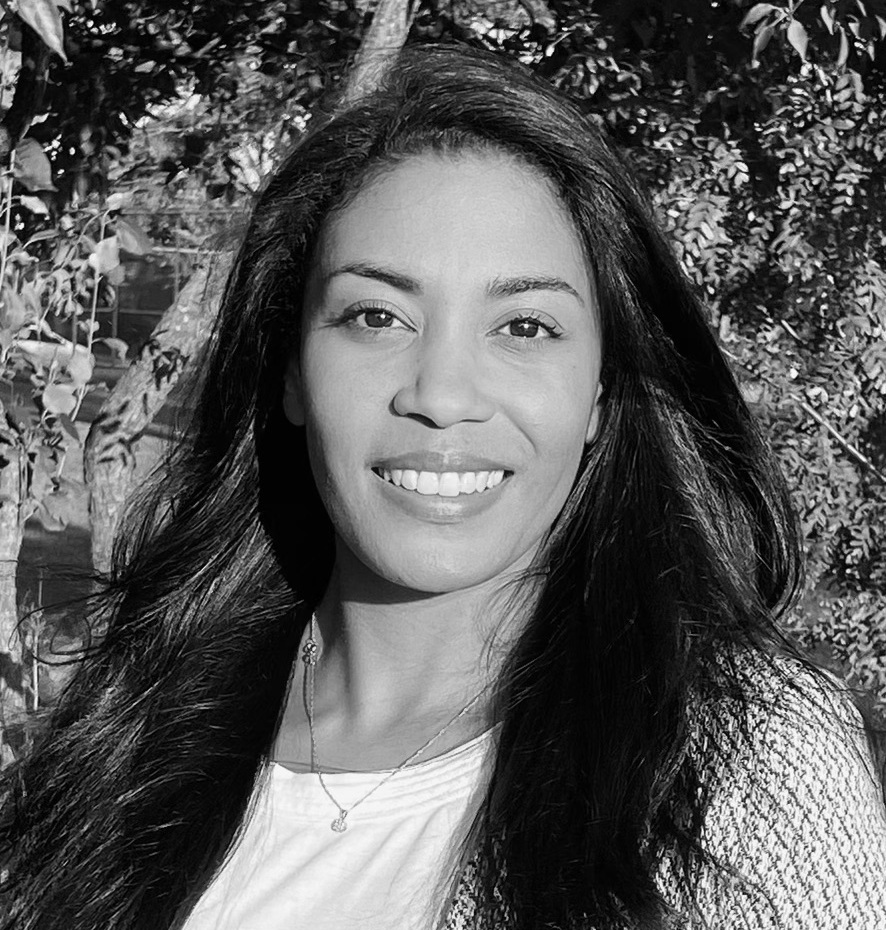
ASHLEIGH ABRAHAM is a PhD student at Carleton University’s Azrieli School of Architecture & Urbanism. She holds a Bachelor of Architectural Studies and a Master of Architecture. She is an OAA Intern Architect with local and international experience. Her research interests span practice and academia, with a focus on methodologies of architectural design and narratives of marginalized communities and their engagement with materiality, landscape, and urbanism. Ashleigh is a researcher with the Architecture Action Lab and instructs advanced software applications in architecture, sustainable planning and development at Seneca Polytechnic.
Supervisor: Dr. Menna Agha, Associate Professor, ASAU, CU